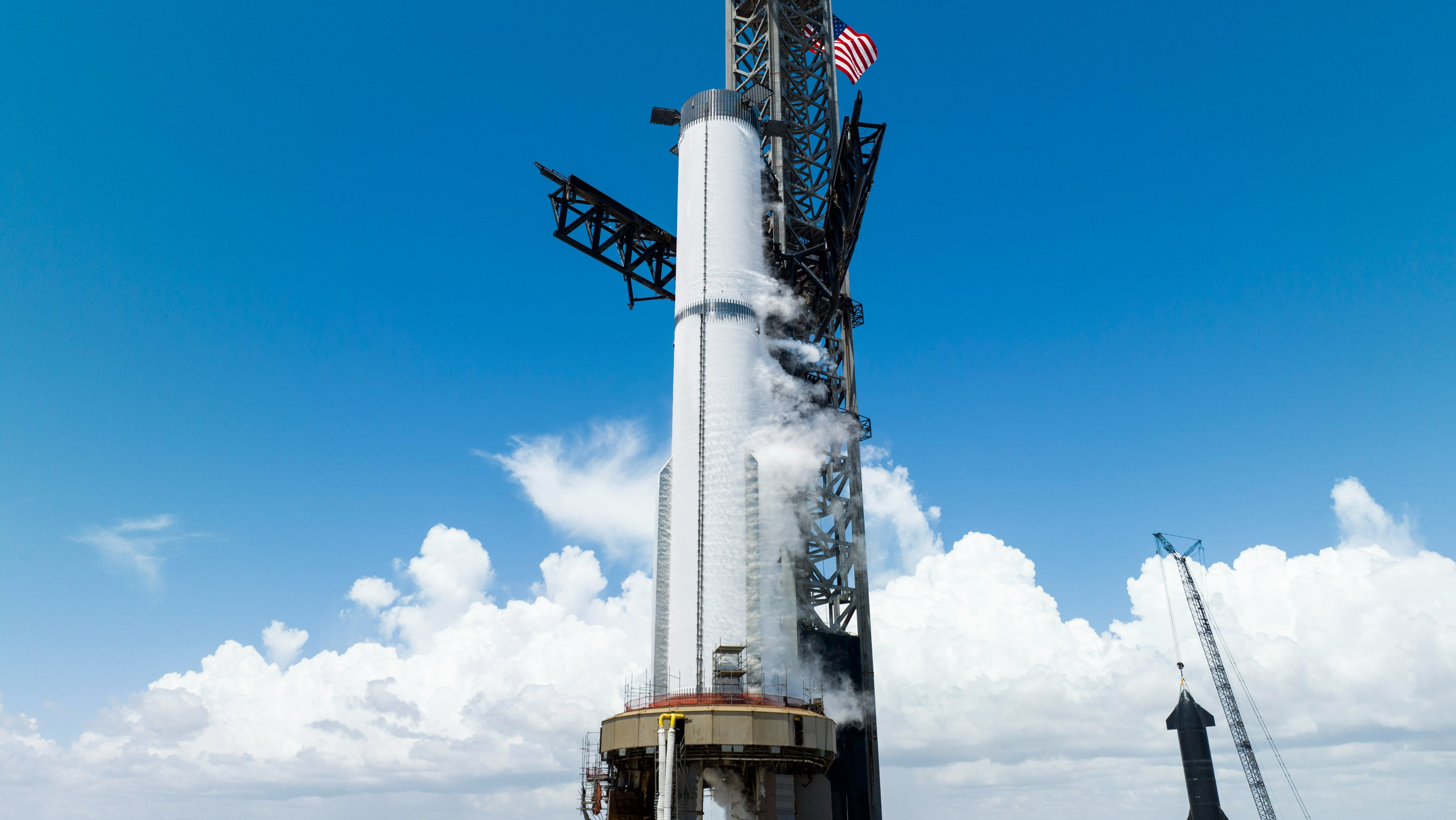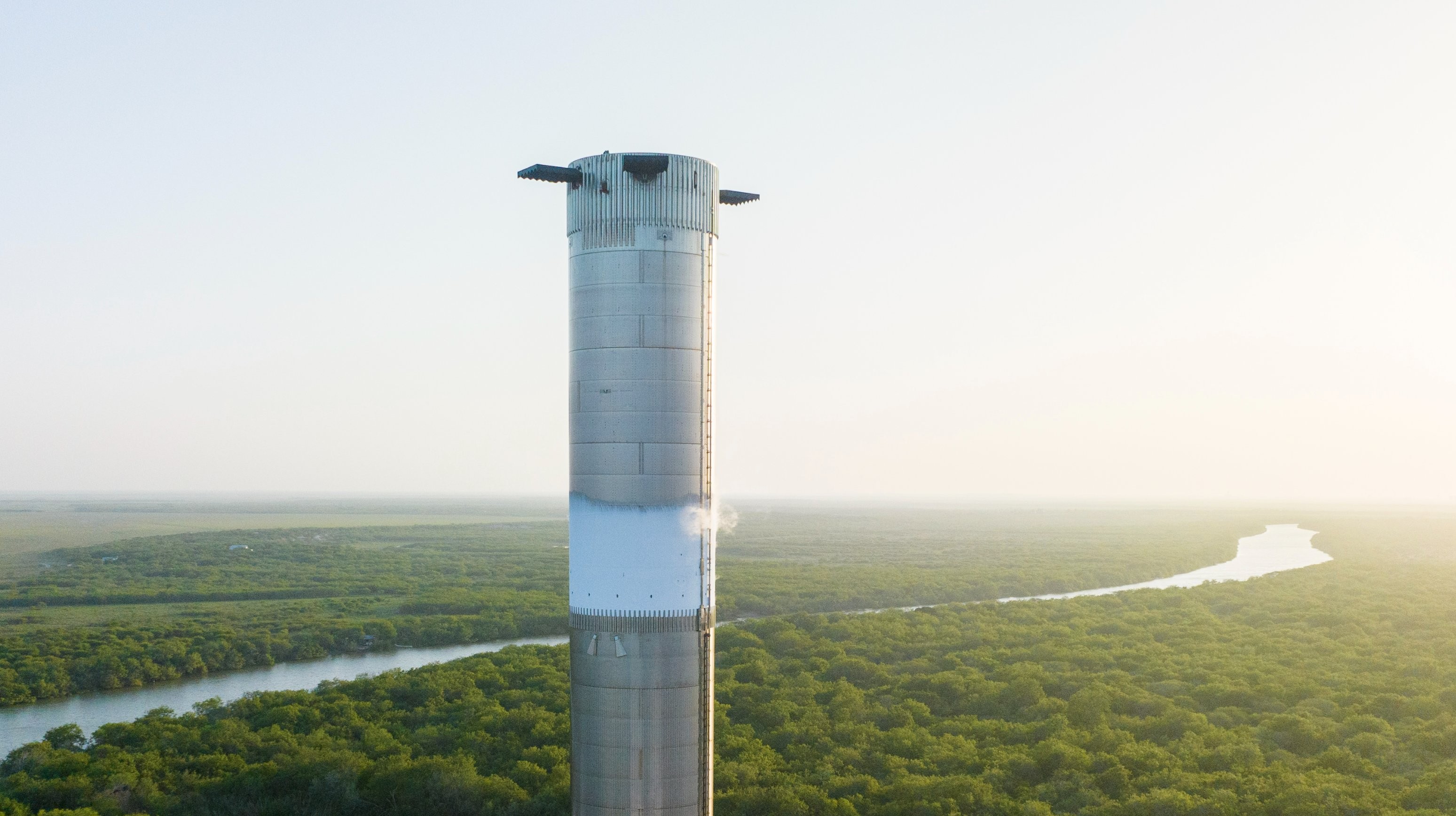
Two prototypes of SpaceX's giant new rocket just passed a key test.
SpaceX loaded propellant into Booster 9 and Booster 10, two "Super Heavy" first stages of its huge new Starship deep-space vehicle. Booster 9 was fueled on the orbital launch mount at the company's Starbase site in South Texas, whereas the Booster 10 test occurred at the nearby Massey's Test Facility.
"Propellant load tests recently completed for Starship Super Heavy Boosters 9 and 10," SpaceX said via X (formerly Twitter) today (July 25). That post also includes photos of the stainless-steel boosters, which are rimmed with frost from the supercold propellants (liquid methane and liquid oxygen).
SpaceX didn't specify when those tests took place. But they had to occur in the past few days, at least for Booster 9; it was just rolled out to the orbital launch mount on July 20.
Related: Relive SpaceX's explosive 1st Starship test in incredible launch photos

The fueling tests are part of SpaceX's campaign to get the two boosters ready for flight. And liftoff could come relatively soon — for Booster 9, anyway. The vehicle is scheduled to conduct the next Starship test flight, which SpaceX founder and CEO Elon Musk has said could take place as soon as this summer.
That timeline may be ambitious, however, given the potential regulatory hurdles SpaceX may need to clear. For instance, a coalition of environmental groups is currently suing the U.S. Federal Aviation Administration, which grants launch licenses, claiming the agency didn't properly assess the damage that Starship liftoffs could do to the South Texas ecosystem and community.
Starship consists of the Super Heavy booster and a 165-foot-tall (50 meters) upper stage spacecraft known — somewhat confusingly — as Starship. Both elements are designed to be fully and rapidly reusable, and both are powered by SpaceX's powerful new Raptor engine. (SpaceX's currently operational rockets, the Falcon 9 and Falcon Heavy, employ a different engine, called Merlin.)
A fully stacked Starship has flown just once, on an April 20 test flight from Starbase that involved the Booster 7 and Ship 24 prototypes.
The plan called for Ship 24 to make a partial circuit of Earth, eventually splashing down near Hawaii. But that didn't happen; the two stages failed to separate as planned, and SpaceX sent a self-destruct command, which resulted in the detonation of the vehicle about four minutes after liftoff.
The upcoming test flight involving Booster 9 and Ship 25 will have similar aims to the April 20 mission, Musk has said.







